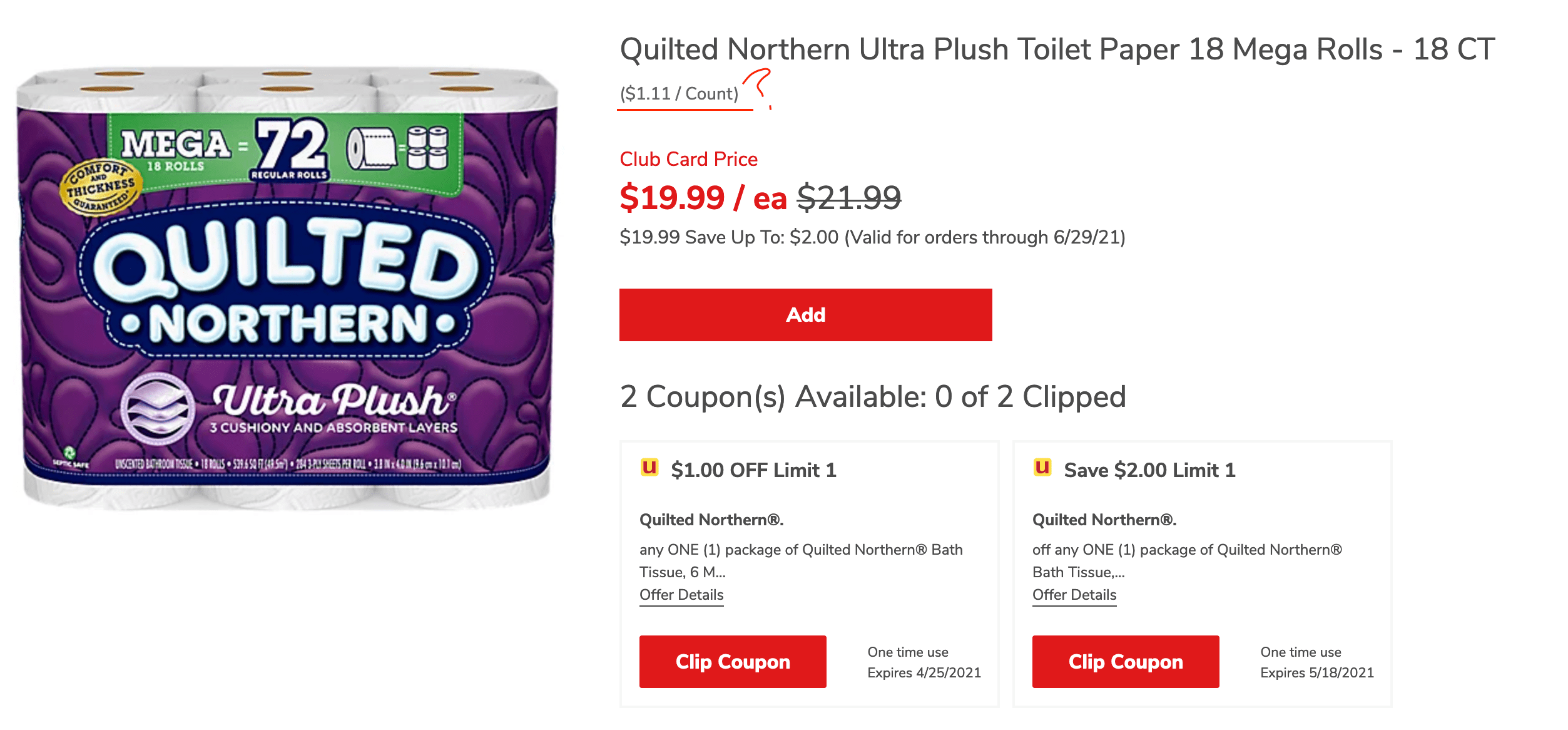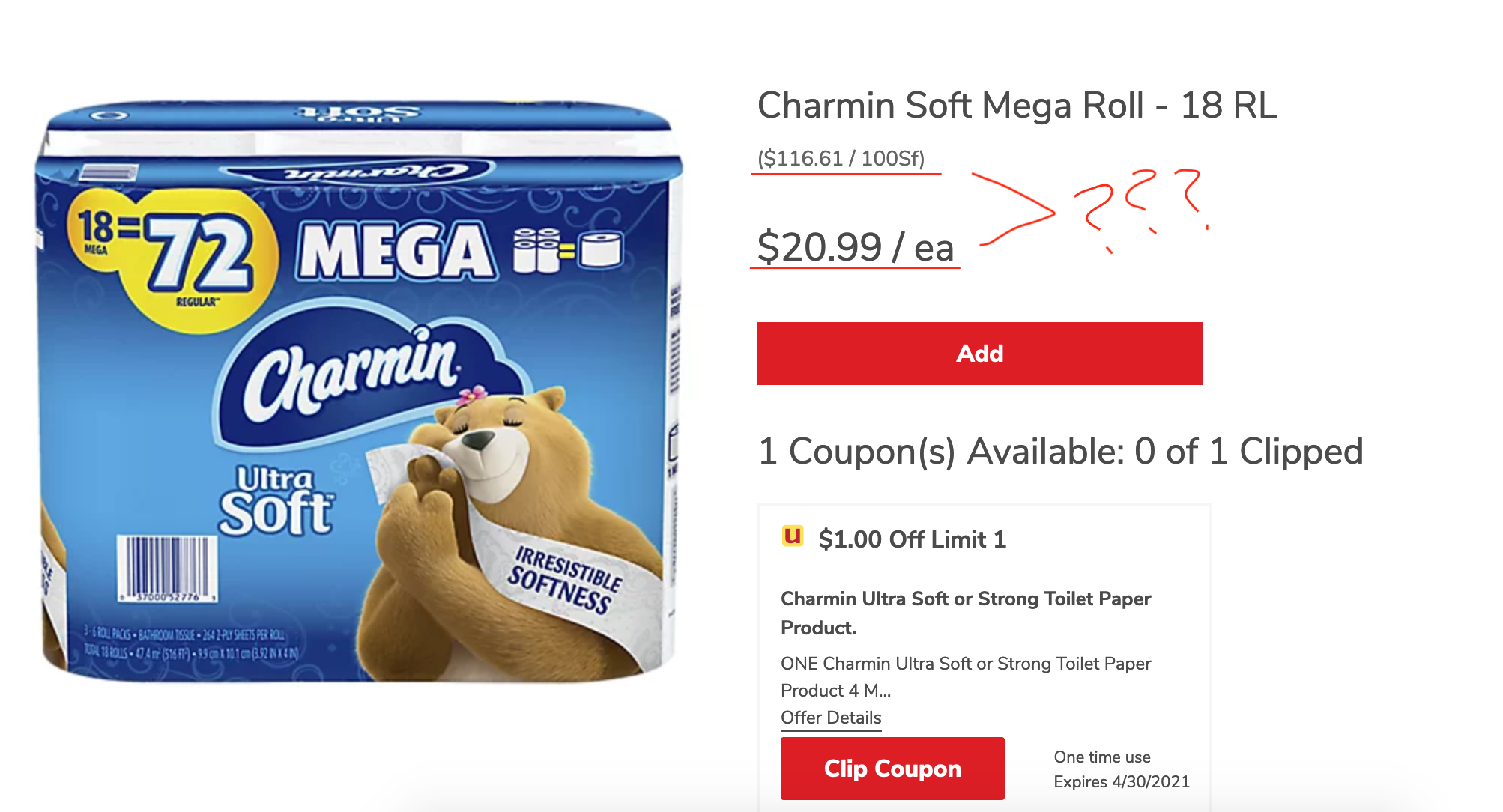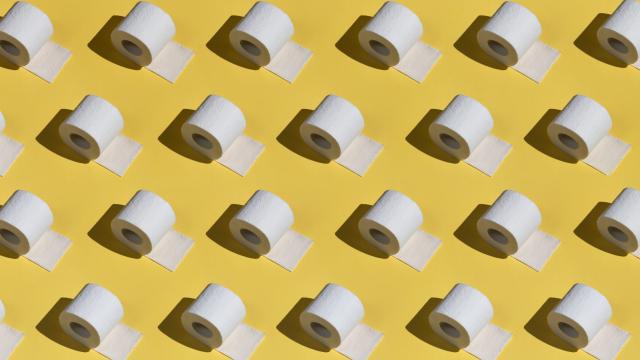Shopping for toilet paper should not be as complicated or expensive as it is. Brands love to splash their packaging with claims that one of their “mega rolls” is equal to 12 or 18 “regular rolls,” but are less forthright about how much actual paper they are giving you. This makes it almost impossible to compare prices from brand to brand — or even within one brand’s offerings.
Of course, that’s kind of the point. If you’re faced with dozens of packages of functionally identical products touting similar (yet also contradictory) marketing claims, you’ll probably give up trying to make an informed choice and just grab something at random. Brands know this, so they put as many options on shelves as possible in the hopes that overwhelmed customers grab one of theirs. Thankfully, it is possible to compare toilet paper prices — you just need to do a little maths first.
How to break down the price
First, find the total square meterage for each option you’re considering. Most brands list it on the packaging, but an increasing number don’t. If that’s out, take the number of sheets per roll and multiply it by the total number of rolls to get the total number of sheets in the package. These numbers are small and hard to read, but at least one of them will be there.
From here, you can either break the price down into dollars per unit or units per dollar. For dollars per unit, divide the package price by the total square meterage (or total sheets). For units per dollar, divide the total square meterage (or total sheets) by the package price. To save money, you want to minimise the dollars per unit or maximise the units per dollar. You can use whichever of these calculations you prefer, but you have to use the same formula consistently to keep the comparisons accurate.
Don’t trust the store’s maths
Unfortunately, you’ll have to do these calculations yourself because unit prices on store shelves are notoriously unreliable. For example, this listing from my local Safeway’s website breaks the price down by “count” but doesn’t say what a “count” is (annotation mine):

A quick check says it’s the price per roll: $US1.11 x 18 rolls per package = $US19.98. (Thanks for rounding up, guys!) Seeing as most of its competitors list unit prices in the $US3-4 per 9 sq ft range, the Quilted Northern looks like a steal — until you realise that $US1.11 per roll works out to about $US3.70 per 100 sq ft.
Store unit prices can also be straight-up wrong, like this one that claims a $US20.99 package of toilet paper somehow costs $US116.61 per 100 sq ft (annotation mine):

Per the label, this package contains 48 sq ft of paper. At $US20.99 for the package, that works out to $US0.04 per square foot, or about $US4.00 ($5) per 100 sq ft. I bet that $US116.61 is the wholesale unit price, or what the store pays for a case of this particular item.
Is doing toilet paper maths a huge pain in the arse? Yes, incredibly so! Sadly, it’s the only way to cut through the jungle of bullshit and figure out how much you’re actually paying for toilet paper. Once you’ve found a brand you like at a price you can tolerate, stock up when it goes on sale. You’ll never have to do the maths again — at least until they change the roll size on you.

Leave a Reply
You must be logged in to post a comment.